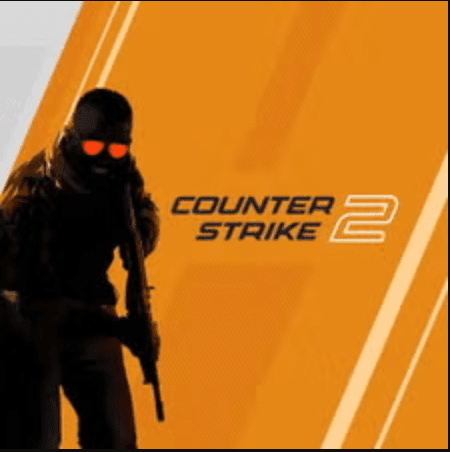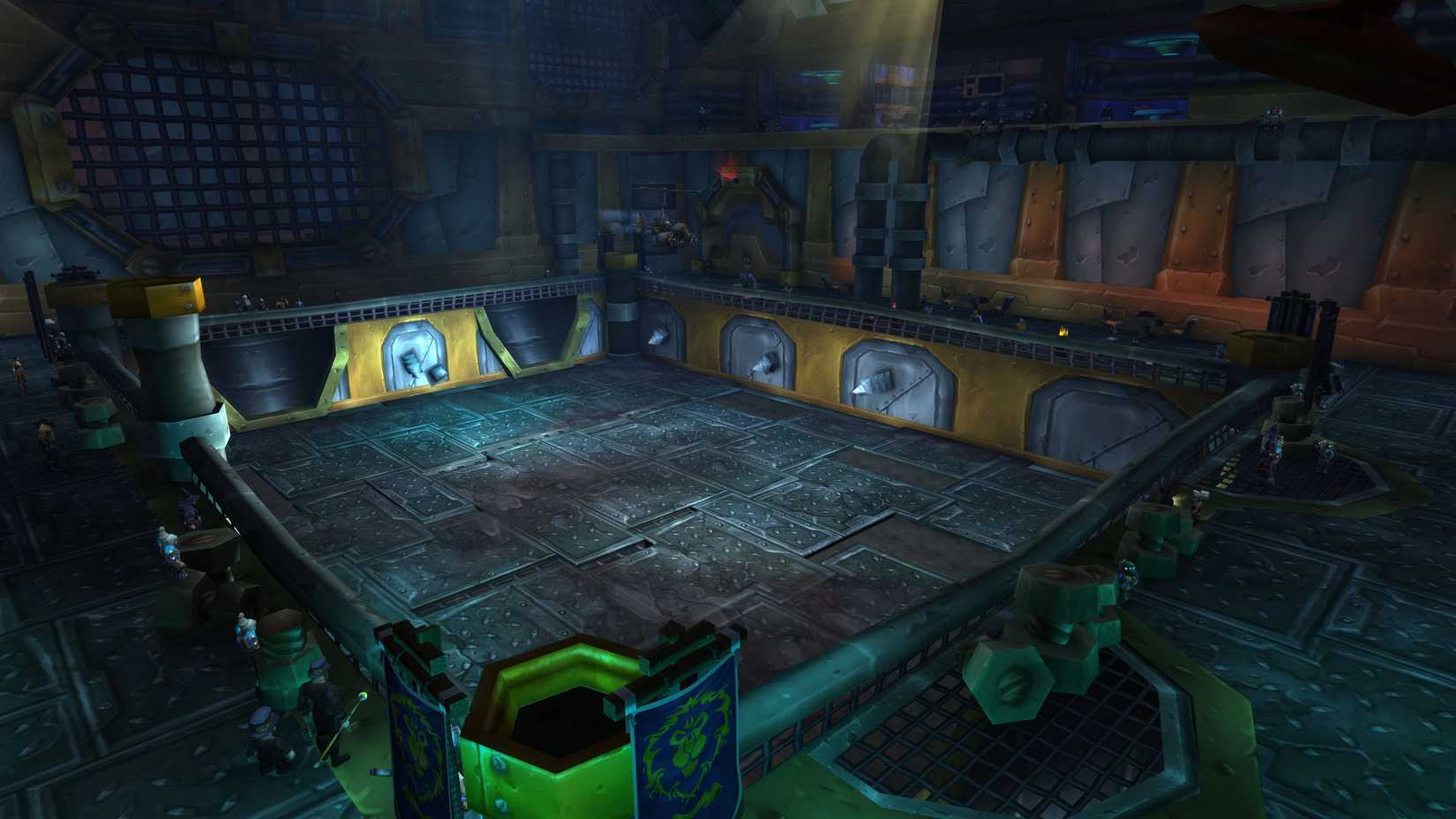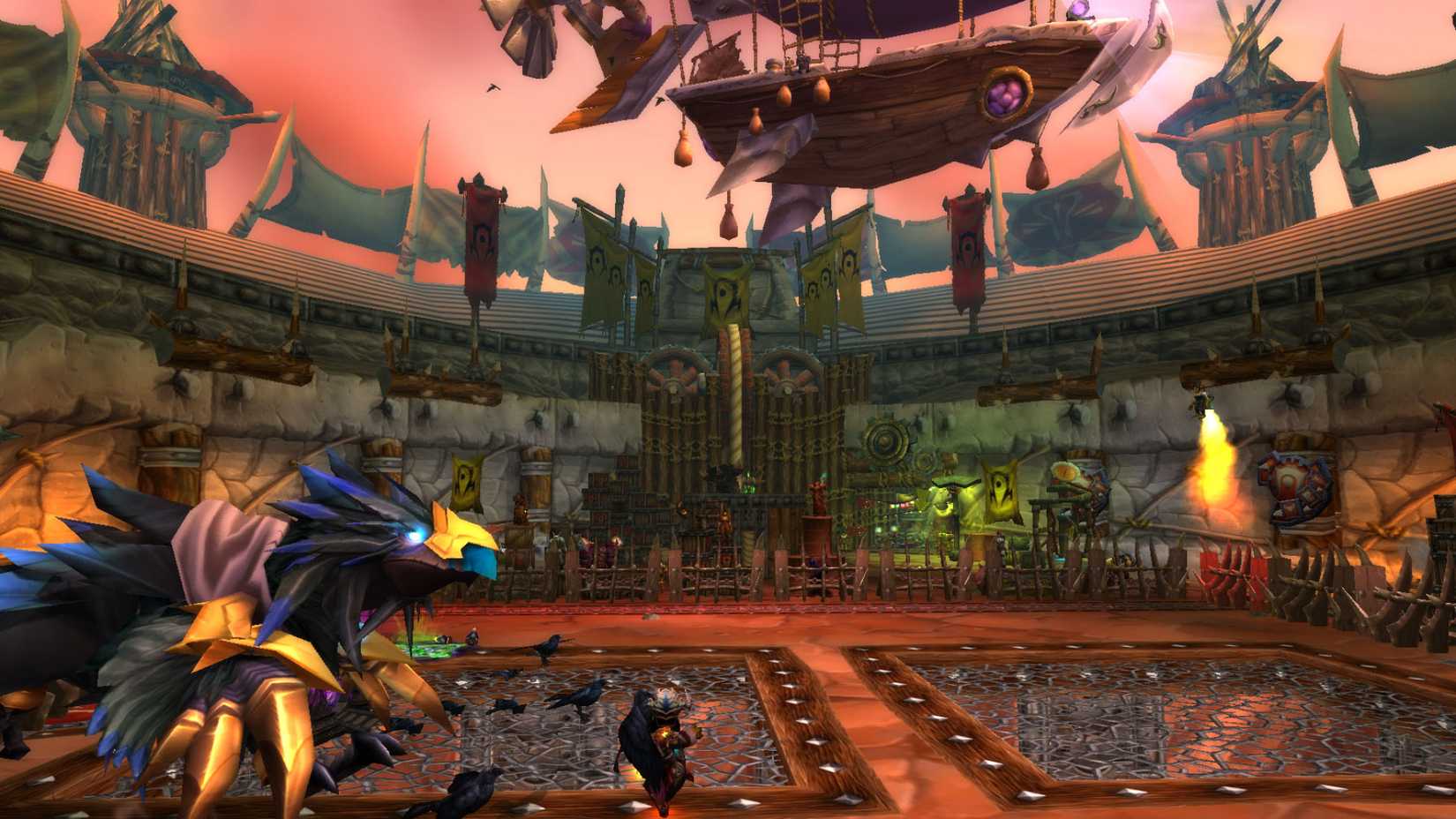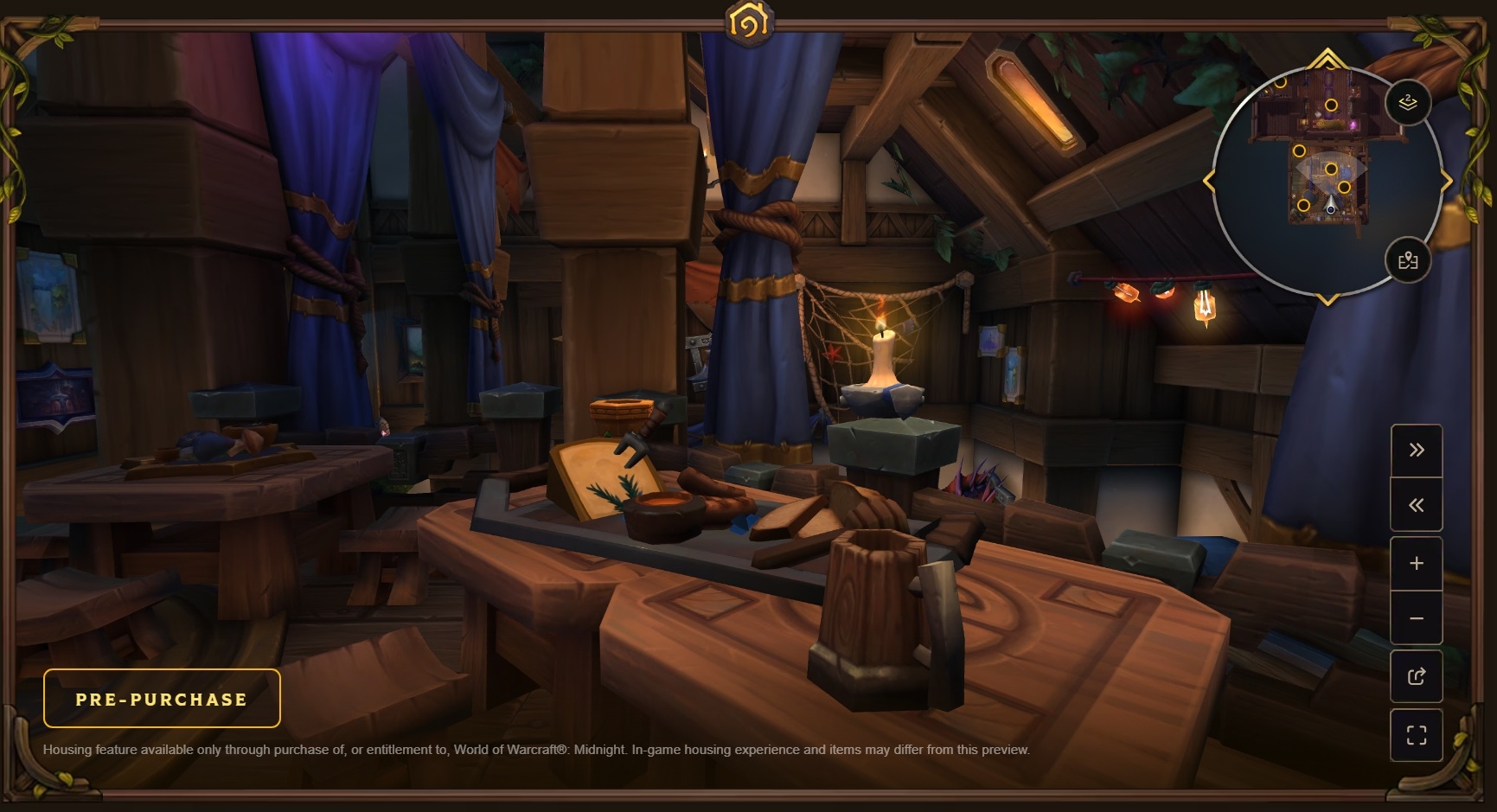WoW’s “Midnight” Expansion Set to Cripple Beloved Combat Addons, Ushering in a New Era of Pure Gameplay and High-Stakes Raiding
Popular Now
 FIFA 23
FIFA 23
 Counter-Strike 2
Counter-Strike 2
 Geometry Dash
Geometry Dash
 Candy Crush Saga
Candy Crush Saga
 Free Fire
Free Fire
 Valorant
Valorant
 God of War Ragnarök
God of War Ragnarök
 Garena Free Fire: Kalahari
Garena Free Fire: Kalahari
 Free Fire Max
Free Fire Max
 Black Myth: Wukong
Black Myth: Wukong 
The landscape of World of Warcraft’s endgame content is on the cusp of a revolutionary change. As Blizzard prepares for the launch of its next major expansion, Midnight, the developers are moving forward with aggressive, controversial plans to significantly restrict the functionality of powerful third-party combat add-ons. This strategic pivot targets the very heart of the game’s competitive environment, particularly the tools that have become mandatory for high-level Mythic Raiding and Mythic+ Dungeons, most notably the immensely popular custom utility addon, WeakAuras, and traditional boss mod software like Deadly Boss Mods (DBM) and BigWigs.
This is not a mere update; it is a fundamental shift in design philosophy. For over a decade, a toxic, symbiotic relationship has existed: Blizzard designs increasingly complex raid encounters, and the community responds with sophisticated add-ons that “solve” those mechanics in real-time. With reports from the Midnight Alpha confirming the disabling of key combat data access, the era of mandatory automation in WoW is drawing to a close, promising a purer, more intuitive, and potentially more accessible experience for the majority of players.
Keywords for High-Value Search Traffic: WoW Midnight Expansion, World of Warcraft Addon Ban, WeakAuras Disabled, New WoW Raid Mechanics, WoW Combat Changes, Best WoW Addons for Raid, WoW Accessibility Features, Blizzard Game Design Philosophy, High CPC Gaming Keywords.
The Addon Armageddon: Restricting Real-Time Combat Logic
The core of Blizzard’s change revolves around limiting the Application Programming Interface (API) access that combat-focused add-ons utilize to read and process in-game events. Tools like WeakAuras and boss mods have historically been able to analyze the game’s combat log, player buffs/debuffs, and boss abilities to generate instantaneous, custom-tailored alerts—often dictating player rotations, movement commands, and defensive cooldown usage. This, according to game director Ion Hazzikostas, is an unintended form of “optimal problem-solving” that removes the challenge of real-time human reaction and group coordination.
In the lead-up to Midnight, the change is set to land as early as the pre-patch. Blizzard’s goal is to create a “black box” around critical combat information. Addons can know a dangerous ability is incoming and can customize the visual or sound of the warning, but they will be explicitly blocked from knowing the underlying logic needed to instantly compute the perfect response. This legislative change essentially breaks the “solve-the-fight” functionality that has been a mainstay of high-end WoW PvE for years.
- WeakAuras’ Future: The immensely versatile WeakAuras framework is the most significant casualty. While its custom UI and quality-of-life functions remain largely intact outside of structured endgame, the combat-solving Auras that are considered mandatory for many specs and encounters will cease to function, prompting the team behind the addon to announce a significant re-evaluation of its future support for Midnight.
- DBM and BigWigs: Traditional boss timers and alerts are also heavily affected. Blizzard is replacing these functions with built-in equivalents. While the initial alpha versions of these native tools are reportedly less comprehensive, the long-term vision is clear: the base game’s UI will provide all necessary, non-problem-solving information.
 Blizzard’s Counter-Measures: Built-in UI and Class Simplification
Blizzard’s Counter-Measures: Built-in UI and Class Simplification
To mitigate the community outcry and ensure a smoother transition, Blizzard is simultaneously addressing two major pain points: The reliance on third-party tools and the inherent “button bloat” in class design. This two-pronged strategy forms the new foundation of WoW combat:
1. Base UI Overhaul and New In-Game Features
Blizzard is aggressively rolling out native alternatives to the most commonly used add-ons, turning what was once a mandatory download list into core game features. These include:
- Rotation Assist: A built-in feature, first introduced in an earlier patch, that highlights recommended abilities, aiming to replace external rotation helpers like Hekili and make learning new specs less daunting.
- Integrated Boss Alerts: A first-party boss alert system designed to replace DBM and BigWigs, giving players essential, timely warnings without the third-party logic.
- Native Damage Meter: A first-party damage and healing meter, replacing Details! or Skada, removing the need for external combat log parsing for basic group performance tracking.
This integration is central to Blizzard’s accessibility focus. The developers argue that no player should be compelled to download multiple third-party tools just to be competent or competitive. The new experience aims to be more intuitive, leveling the playing field between seasoned veterans and new recruits for the World of Warcraft.
2. The Class and Combat Design Philosophy
Accompanying the API changes is a significant re-tuning of class complexity. The Midnight expansion will see many classes receive a simplification of their rotations, with a reduction in the sheer number of abilities, diminishing the issue of “button bloat.”
Game Director Ion Hazzikostas has emphasized that reducing the reliance on third-party logic will allow them to design more intuitive and visually clear encounters. Boss mechanics will now rely less on hidden timers and complex calculation and more on clear visual cues, requiring players to react as humans rather than as machines following scripted prompts.
“The goal specifically is to just restrict that problem solving real-time computation that’s used to aid moment-to-moment combat and do the least possible damage to every other addon that millions of people use and enjoy.” – Ion Hazzikostas (Source: PC Gamer)
The Community Divide: Accessibility vs. Veteran Tools
The reception to this monumental change is, predictably, fractured. For many casual and returning players, the move is a welcome breath of fresh air. The elimination of “mandatory” add-ons lowers the barrier to entry for endgame content like Mythic+ and Raiding, improving the overall new player experience.
 However, the veteran and competitive communities—those deeply invested in Raid Progression and high Mythic+ Key pushing—express severe reservations. The core concerns include:
However, the veteran and competitive communities—those deeply invested in Raid Progression and high Mythic+ Key pushing—express severe reservations. The core concerns include:
- Accessibility for Older Players: Many players who have enjoyed WoW for nearly two decades are now older, with diminished reflexes or vision. They argue that customizable add-ons like WeakAuras were essential accessibility features, allowing them to scale UI elements, create high-contrast visual cues, or receive clear, audible prompts that the default UI cannot replicate. The fear is that the “inferior alternatives” from Blizzard will effectively end their ability to participate in challenging content (Source: Blizzard Forums).
- Competitive Depth: Elite guilds value the precise, custom control that WeakAuras offered for min-maxing complex rotation and resource management. Stripping this capability, they argue, simplifies the game and reduces the competitive skill ceiling of WoW Esports.
- Quality of Life: Outside of combat, WeakAuras is a massive tool for countless quality-of-life enhancements—from tracking trade skill cooldowns to making inventory management more visible. While Blizzard states this non-combat functionality is largely safe, the initial heavy-handed approach has caused alarm across the entire addon ecosystem.
What This Means for the Future of WoW Gameplay
The pivot in World of Warcraft‘s game design is more than just an addon restriction; it signals a fundamental change in the player-game interaction for The Worldsoul Saga, which continues with Midnight and The Last Titan. Blizzard is reclaiming control over the way players consume information and execute strategy. The challenge is shifting from “solving” the encounter with code to “mastering” it through human observation, reaction, and group communication—a return to a more classic MMORPG feel.
For players focused on max-level content, the immediate future necessitates a paradigm shift. Relying on muscle memory and the simplified default UI will become paramount. This transition will be rocky, but if Blizzard delivers on its promise of a more intuitive, visually expressive combat experience, the long-term result could be a more sustainable and welcoming MMO environment.
The community is now watching the Midnight Alpha and Beta development closely. The quality and customization options of Blizzard’s new built-in tools will ultimately determine whether this is hailed as a victory for game accessibility and clean design or lamented as a loss of player agency and a decline in high-skill gaming complexity. The final verdict on this bold move is yet to be rendered, but one thing is certain: the way we play World of Warcraft is about to be radically redefined.
SEO Meta-Keywords: WoW Midnight combat changes, WeakAuras alternative, Blizzard API restrictions, Deadly Boss Mods future, World of Warcraft endgame accessibility, WoW Hero Talents, The Worldsoul Saga, Gaming Industry News, High-Value Gaming Content.
***
Disclaimer: This article is based on recent developer announcements, alpha/beta testing reports, and official statements regarding the World of Warcraft: Midnight expansion. Information regarding third-party addon functionality and Blizzard’s integrated features is subject to change as development continues. (Sources: IGN Nordic, PC Gamer, DualShockers, Blizzard Developer Communications).
Nguồn









 Blizzard’s Counter-Measures: Built-in UI and Class Simplification
Blizzard’s Counter-Measures: Built-in UI and Class Simplification